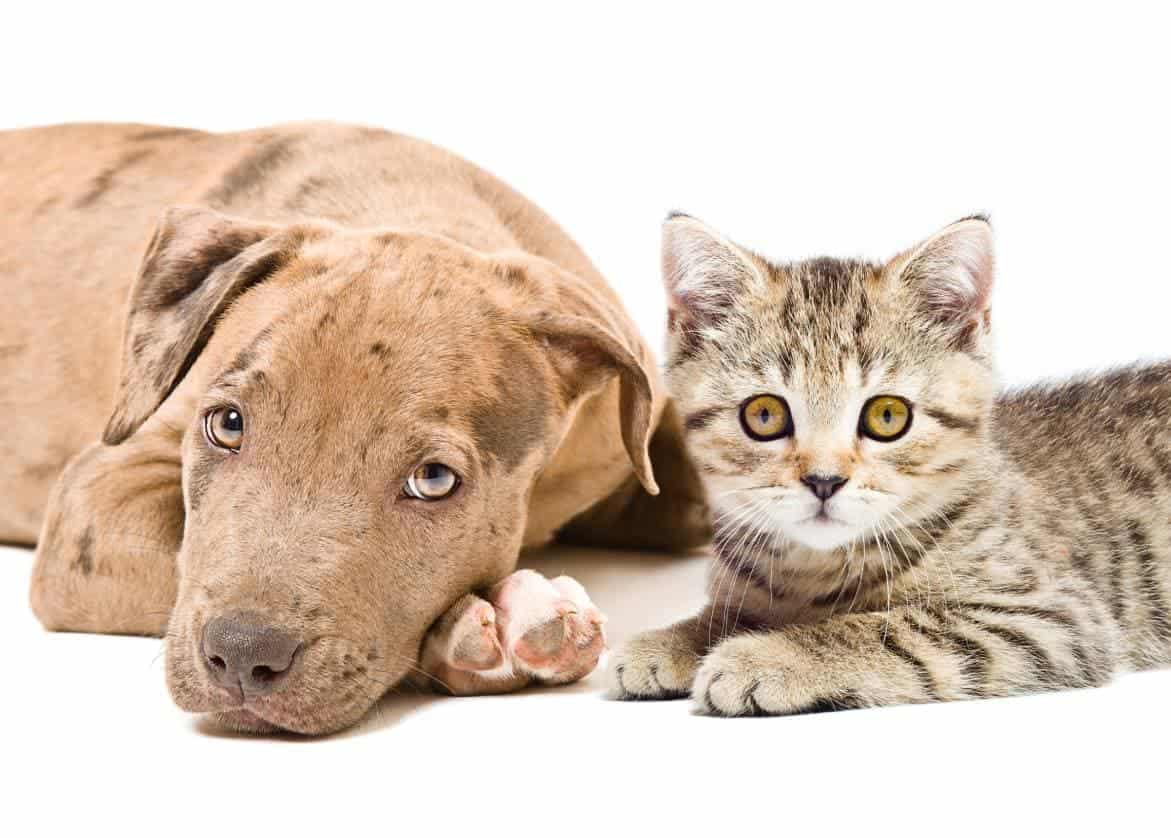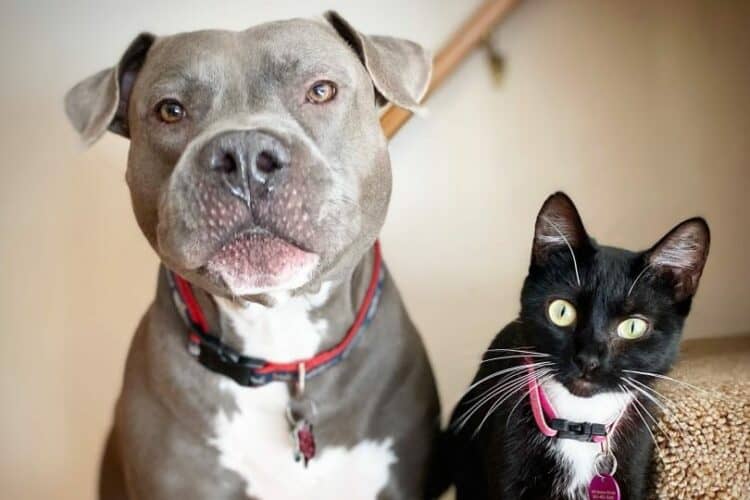Pitt Bulls have a bad rap but can be some of the most gentle and protective family pets. Because they are such great pets, many who already have a Pitt Bull wonder if they will get along with a cat as they look to expand their fur family.
Pitt Bulls can be good with cats but will need to adjust to the change gradually. Also, not every Pitt Bull will tolerate a cat. You’ll need to consider your dog carefully and make a good decision for both them before bringing home a new feline family member.
Understanding Your Pets
When determining whether your Pitt Bull will get along with a cat, there are many pieces to the puzzle. Understanding more about your dog will help you determine whether you should bring a cat into your home or not. Carefully consider your pet’s temperament, background, and socialization history.
- Temperament: A dog’s temperament is its personality or nature. This is how they are born to be, including how strong their instincts are or how much energy they display.
- Background: If you adopted a Pitt Bull from a shelter or rescue, they might have a history that makes them more or less likely to get along with cats. Unfortunately, many are abused, making it difficult to get along with other pets of any kind.
- Socialization: Pitt Bulls are pretty intelligent and learn well as puppies. If you socialize them as early as eight weeks old with people, other dogs, and cats, they can learn to adapt to many social situations as adults.

The Socialization Plan
Once you’ve adopted a cat, it’s time to introduce them to the family dog! It’s essential to start the introductions immediately so both pets know who and what has entered their domain. The following is a guide to get you started.
- Keep them separated but in a way that allows them to smell each other safely. A door with a gap at the bottom will work.
- Keep your Pitt Bull on a leash during initial meetings. Choose a large area to minimize injuries, and make sure you have someone else available to help separate them if needed.
- Introduce them slowly, only bringing them together for short meetings several times each day. Gradually lengthen the amount of time they spend together.
- Always observe their behavior and look for signs of stress or fear.
- Reward the dog and cat equally and simultaneously for their good behavior.
- Gradually shift to off-leash interactions that are still closely monitored, ideally by more than one person who can assist.
- Avoid unsupervised time together until you feel comfortable that they are both relaxed in their environment and with each other. Always allow an “escape route” for the cat.
Warning Signs
While you are working on your socialization plan, you should be observant. Always be aware of your pet’s behavior, even small changes or signs of stress. Some warning signs may indicate that the pets won’t get along, and others may mean changes to your socialization plan.
- Either pet acts threatened: They may feel threatened physically, or it could be their territory, food, or personal connection with you or another person in the home. A threatened Pit Bull can act aggressively.
- Playing too rough. If your Pitt Bull plays rough with other pets, it may mean they are overly aggressive. Another dog may tolerate this aggression, but a cat is much smaller and may not be able to defend against this aggression, even if your dog is “just playing.”
- Chasing other animals. Another sign that your Pitt Bull may not get along with cats is that they hunt other small animals. If you see them chase squirrels in the yard, they will likely do the same thing with a cat.
- Your cat is backing away. Your cat will back away from a large threat like a Pitt Bull, but they won’t attack them, even if backed into a corner. This is because of the considerable size difference between them. Look for signs that the cat is frightened and step in.
Final Thoughts
Many Pitt Bulls get along with cats if given time to adapt. If you are unsure how to proceed or notice inappropriate behavior, reach out to your pet’s veterinarian or a veterinary behaviorist for additional guidance. Remember, the safety of your dog, the cat, and your family is always important and should come first.
Featured Image Credit: Shutterstock














